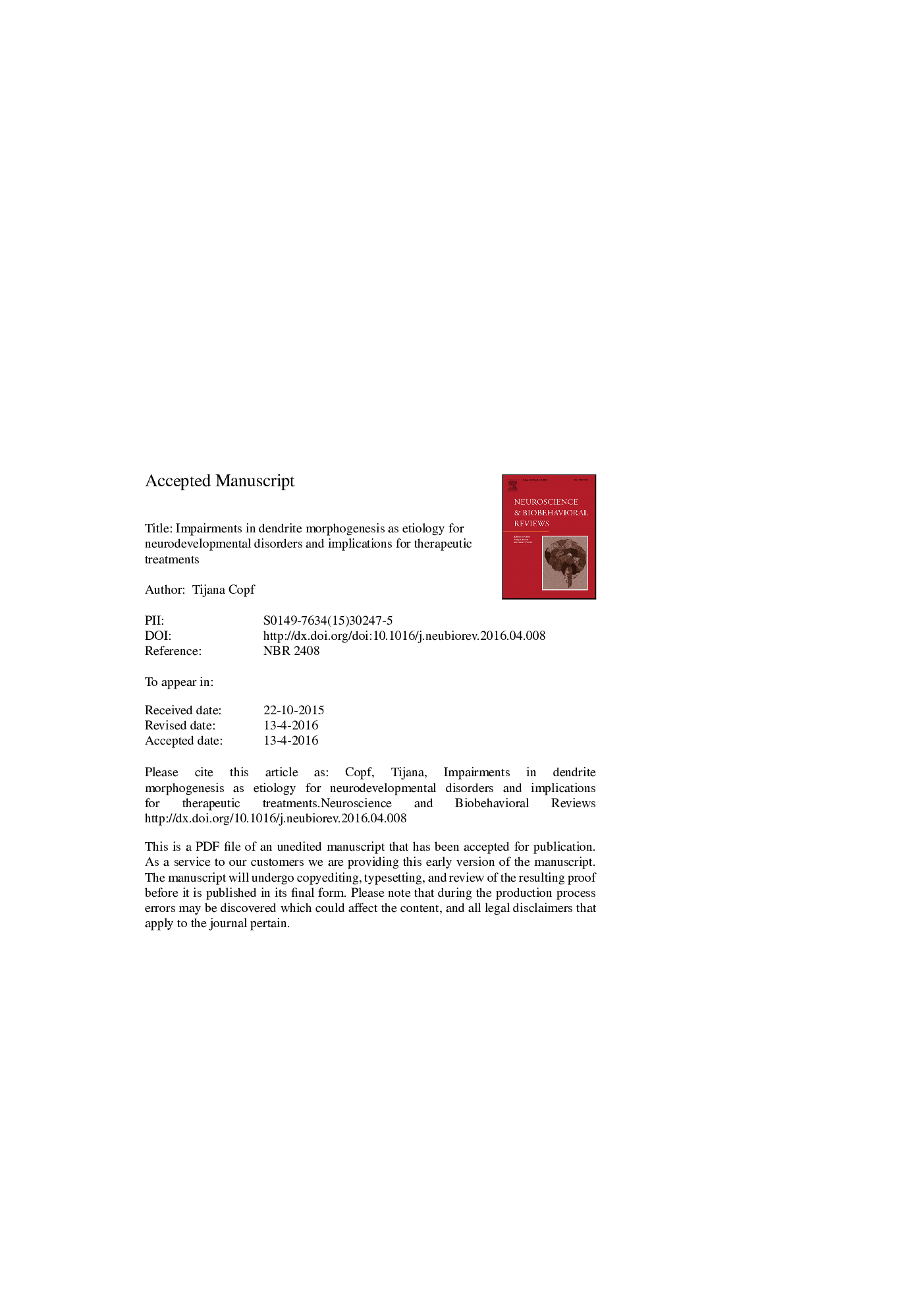| Article ID | Journal | Published Year | Pages | File Type |
|---|---|---|---|---|
| 7303109 | Neuroscience & Biobehavioral Reviews | 2016 | 79 Pages |
Abstract
Dendrite morphology is pivotal for neural circuitry functioning. While the causative relationship between small-scale dendrite morphological abnormalities (shape, density of dendritic spines) and neurodevelopmental disorders is well established, such relationship remains elusive for larger-scale dendrite morphological impairments (size, shape, branching pattern of dendritic trees). Here, we summarize published data on dendrite morphological irregularities in human patients and animal models for neurodevelopmental disorders, with focus on autism and schizophrenia. We next discuss high-risk genes for these disorders and their role in dendrite morphogenesis. We finally overview recent developments in therapeutic attempts and we discuss how they relate to dendrite morphology. We find that both autism and schizophrenia are accompanied by dendritic arbor morphological irregularities, and that majority of their high-risk genes regulate dendrite morphogenesis. Thus, we present a compelling argument that, along with smaller-scale morphological impairments in dendrites (spines and synapse), irregularities in larger-scale dendrite morphology (arbor shape, size) may be an important part of neurodevelopmental disorders' etiology. We suggest that this should not be ignored when developing future therapeutic treatments.
Related Topics
Life Sciences
Neuroscience
Behavioral Neuroscience
Authors
Tijana Copf,
